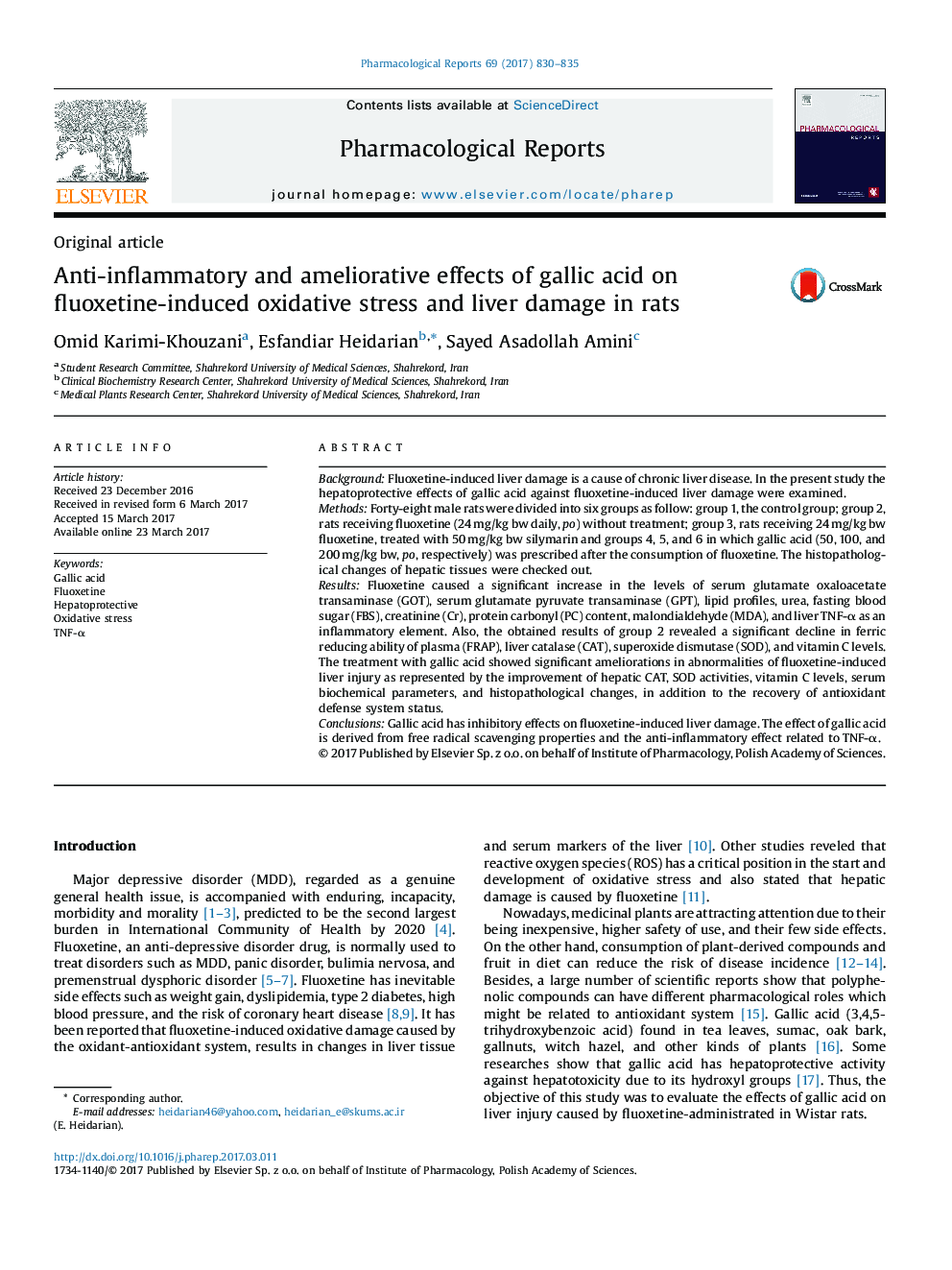| Article ID | Journal | Published Year | Pages | File Type |
|---|---|---|---|---|
| 5515055 | Pharmacological Reports | 2017 | 6 Pages |
â¢Fluoxetine administration led to damage in rat liver.â¢Gallic acid reduced liver damage and TNF-α expression by fluoxetine.â¢Gallic acid led to increase liver CAT, Vit C, and SOD in damaged liver.â¢Gallic acid resulted in elevation in serum FRAP.
BackgroundFluoxetine-induced liver damage is a cause of chronic liver disease. In the present study the hepatoprotective effects of gallic acid against fluoxetine-induced liver damage were examined.MethodsForty-eight male rats were divided into six groups as follow: group 1, the control group; group 2, rats receiving fluoxetine (24 mg/kg bw daily, po) without treatment; group 3, rats receiving 24 mg/kg bw fluoxetine, treated with 50 mg/kg bw silymarin and groups 4, 5, and 6 in which gallic acid (50, 100, and 200 mg/kg bw, po, respectively) was prescribed after the consumption of fluoxetine. The histopathological changes of hepatic tissues were checked out.ResultsFluoxetine caused a significant increase in the levels of serum glutamate oxaloacetate transaminase (GOT), serum glutamate pyruvate transaminase (GPT), lipid profiles, urea, fasting blood sugar (FBS), creatinine (Cr), protein carbonyl (PC) content, malondialdehyde (MDA), and liver TNF-α as an inflammatory element. Also, the obtained results of group 2 revealed a significant decline in ferric reducing ability of plasma (FRAP), liver catalase (CAT), superoxide dismutase (SOD), and vitamin C levels. The treatment with gallic acid showed significant ameliorations in abnormalities of fluoxetine-induced liver injury as represented by the improvement of hepatic CAT, SOD activities, vitamin C levels, serum biochemical parameters, and histopathological changes, in addition to the recovery of antioxidant defense system status.ConclusionsGallic acid has inhibitory effects on fluoxetine-induced liver damage. The effect of gallic acid is derived from free radical scavenging properties and the anti-inflammatory effect related to TNF-α.
Graphical abstractDownload high-res image (206KB)Download full-size image
